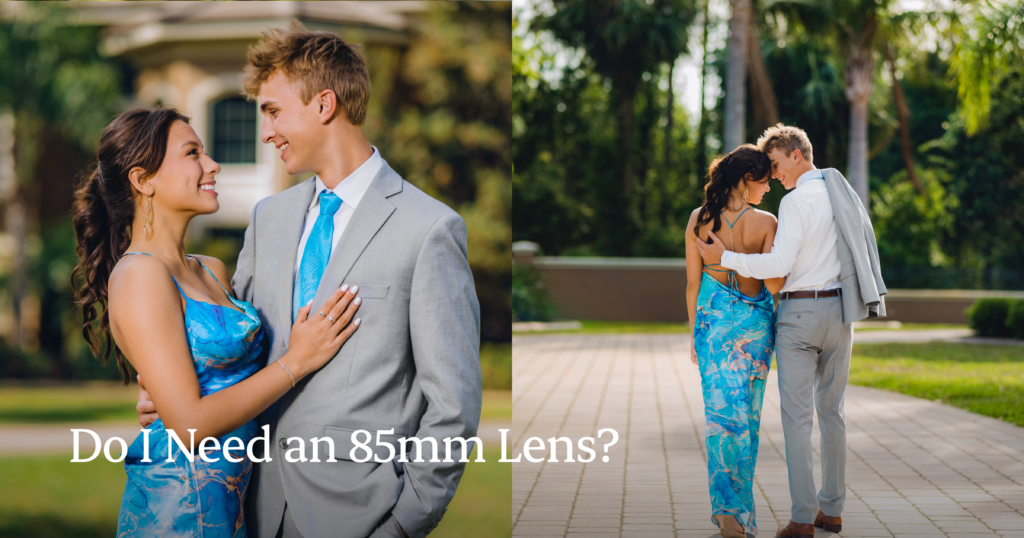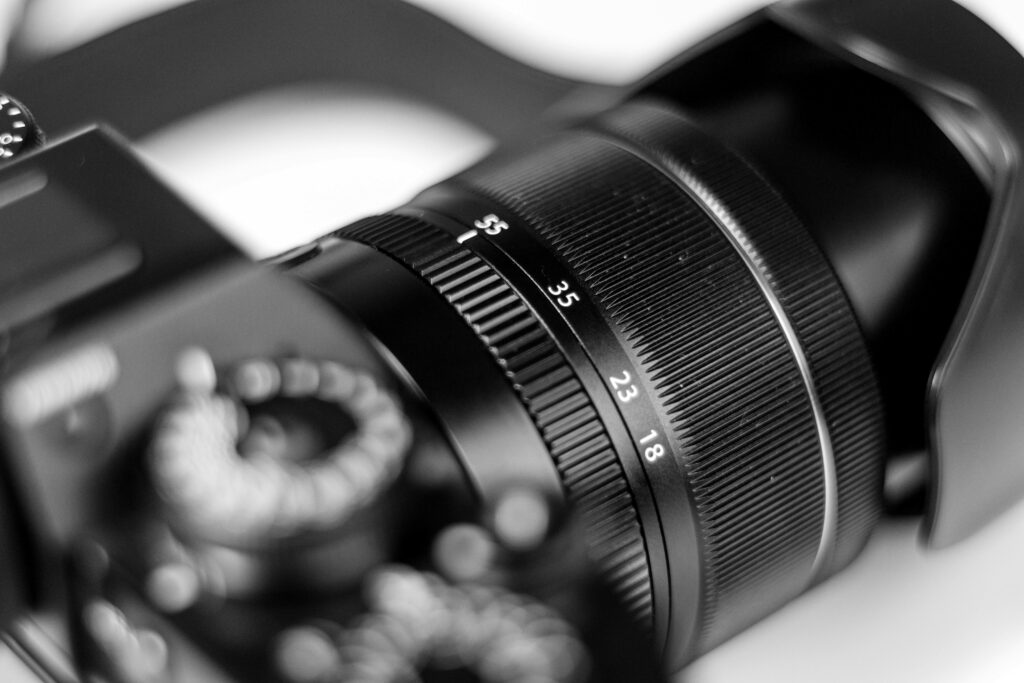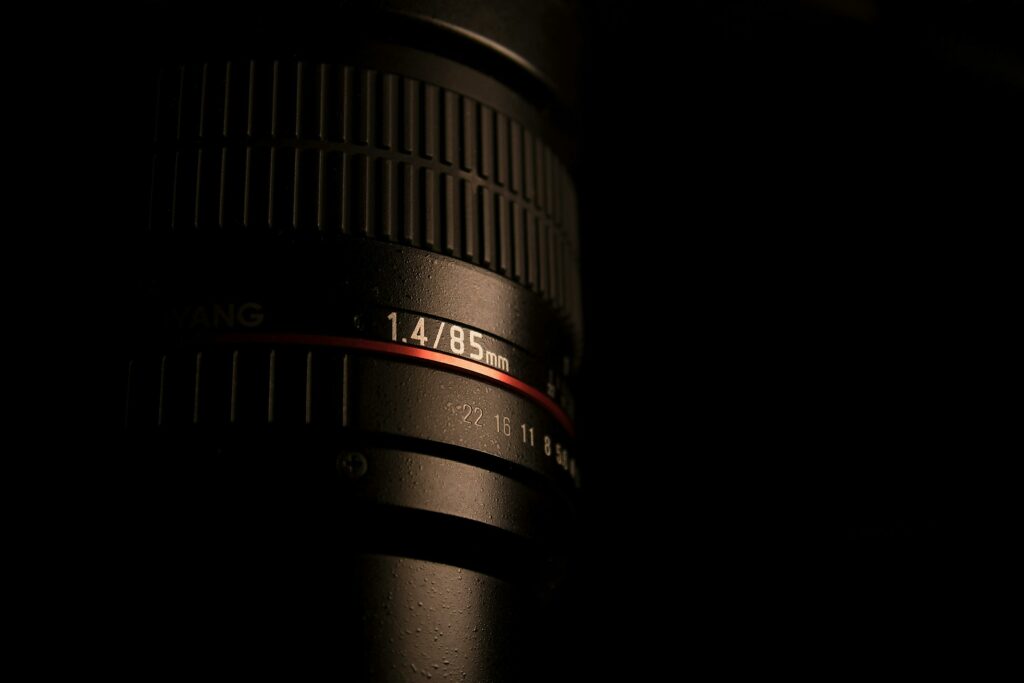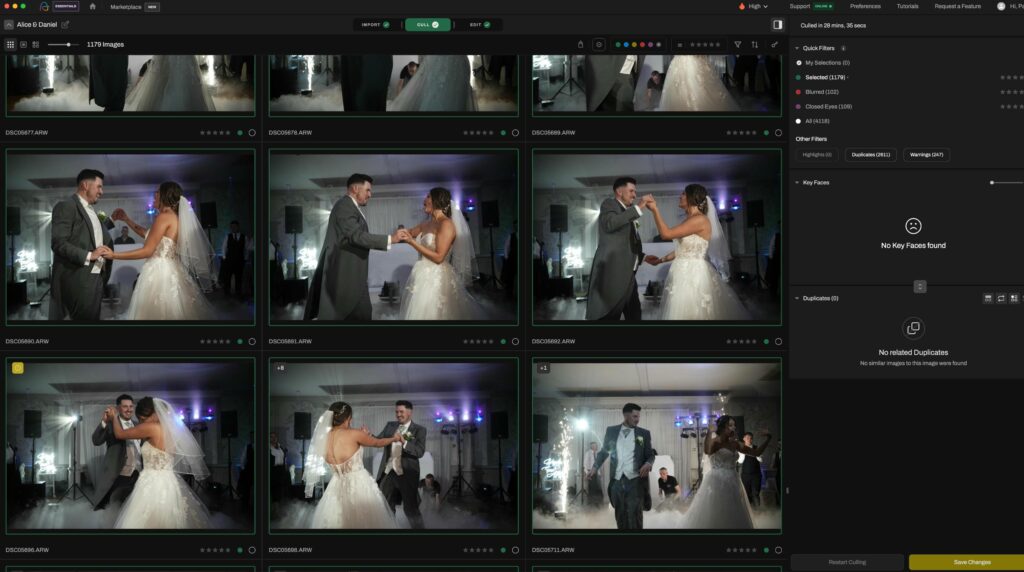Do I Need an 85mm Lens? Comparing 85mm vs. 50mm for Your Photography Style
You know the drill—you’re loading up your gear for a shoot, and you’ve got room for just one prime lens. The 50mm? It’s flexible, lightweight, and always reliable. Do I need an 85mm lens? Smooth, elegant, and made for portraits with the perfect focal length. It’s not an easy call.
If you’re a professional photographer—or a wedding shooter looking to branch into something new—this choice isn’t just about specs or gear weight. It's about understanding photography industry trends, how you shoot, what kind of stories you want to tell, and how connected you want to feel to your subject. Do you need something that moves as fast as you do? Or something that creates those crisp, stylized images your clients love?

This guide isn’t here to crown a winner. It’s here to help you figure out what works for you, right now. We’ll dive into the real-world differences between these two focal lengths, when and why one might serve you better, and how tools like Aftershoot can help you actually measure which lens supports your best work.
Because the right lens should make your job easier, not harder.
Understanding Focal Length and Lens Options
Understanding focal length is fundamental to mastering photography. Focal length determines the angle of view and the magnification of your images. For instance, an 85mm lens is considered a medium telephoto lens, making it a fantastic lens for portrait photography. This focal length offers a flattering perspective by compressing the subject’s features, resulting in a natural and appealing image.
When it comes to lens options, photographers can choose from prime lenses, zoom lenses, and wide-angle lenses. Prime lenses, like the 85mm lens, have a fixed focal length, which often translates to superior image quality and a shallow depth of field. This makes them ideal for creating that beautiful background blur, or bokeh, that many portrait photographers love.
On the other hand, zoom lenses allow you to adjust the focal length to suit different shooting scenarios, making them versatile but sometimes at the cost of image quality.
Wide-angle lenses, with their broader field of view, are perfect for capturing expansive scenes but are less suited for portrait work.
By understanding these different focal lengths, lens types, and how they interact with hard vs soft light, you can better choose the right tool for your specific photography needs.

What’s the Real Difference Between 85mm vs. 50mm Focal Length?
At first glance, the 50mm and 85mm may just seem like numbers on a lens barrel. But in practice, these two focal lengths offer dramatically different perspectives—and understanding those differences can help you choose the lens that actually fits your way of shooting.
The 50mm is often described as the lens that sees like the human eye. It’s great for capturing authentic, immersive moments—like street scenes, behind-the-scenes wedding prep, or lifestyle portraits. It doesn’t distort, and it brings just enough of the environment into the frame to tell a broader story.
The 85mm, on the other hand, is all about intimacy from a distance. You get gorgeous background compression, super smooth bokeh, and that cinematic separation between subject and backdrop. It’s the lens that flatters faces, simplifies backgrounds, and gives your images a more editorial finish.
If the 50mm feels like sitting across from someone at a coffee shop, the 85mm feels like observing them through a softly lit window. Both are beautiful—just different in how they invite the viewer into the moment. The 85mm is often considered the ideal portrait lens due to its ability to render subjects in flattering proportions and create a shallow depth of field.
50mm vs. 85mm: Quick Comparison
| Feature | 50mm | 85mm |
| Field of View | Wider, more natural | Tighter, more compressed |
| Best For | Lifestyle, street, events | Portraits, headshots, product |
| Distance to Subject | Closer proximity | More physical distance |
| Background Blur | Moderate bokeh | Stronger, creamier bokeh |
| Subject Separation | Good | Excellent |
Neither lens is “better” overall—it’s about which enhances the type of images you’re trying to create and how you like to move during a shoot.

Which Lens Matches Your Photography Style?
If you’re deciding between the 50mm and 85mm, think about how each one performs in real-world settings. Your genre, working distance, and even your personality as a shooter all matter when selecting your essential photography gear. A prime lens with a single focal length, like the 85mm, can offer superior light capture and portability compared to zoom lenses, making it a preferred choice for many photographers.
For Portrait Photography
- 85mm: The 85mm lens is renowned for its ideal portrait focal length, offering flattering compression and soft background separation, making it a top choice for headshots and beauty portraits. It minimizes facial distortion and gives your subject a polished look.
- 50mm: Better for lifestyle or environmental portraits where you want to capture both the subject and their surroundings. It feels more casual and honest.
Pro Tip: If your client work is heavy on close-ups or you shoot in studio settings, 85mm is your ally. For documentary-style portraiture, the 50mm wins.
For Weddings & Events
- 50mm: It’s the lens that does it all—details, candids, dance floor chaos. Its natural field of view makes transitions seamless and is perfect for 3/4 and full-length portraits.
- 85mm: Ideal for moments that require a respectful distance: ceremonies, quiet portraits, or intimate reactions during toasts.
Pro Tip: Many wedding photographers carry both. But if you can only bring one, decide based on whether your style leans more toward storytelling or timeless portraiture, and consider how your lens choice can help attract photography clients.
Understanding how each lens works can be crucial if you're starting a wedding photography business. Additionally, mastering wedding photography editing can help enhance the images captured, regardless of the lens used.
For Street & Lifestyle Photography
- 50mm: It lets you blend into the scene. The images feel like you're part of the moment, not an observer.
- 85mm: Less subtle and more deliberate. You’ll have to step back—but you’ll capture isolated, crisp subjects with dreamy backgrounds.
For Product & Branding Work
- 85mm: Delivers refined, editorial-level imagery. Excellent for beauty, food, and product flat lays.
- 50mm: Offers flexibility in lifestyle-driven branding shoots. It allows space for props, movement, and natural setups.
When it comes down to it, the 85mm is ideal for distance, control, and polish. The 50mm is better for flexibility, intimacy, and agility.
Feel, Distance, and Comfort: How These Lenses Shape Your Shooting Experience
Choosing a lens isn’t just about the photos—it’s about how the lens shapes your process, posture, and pace. Unlike a zoom lens, which offers flexibility with varying focal lengths, the 85mm prime lens prioritizes image quality, sharpness, and performance in low light due to its fixed focal length and aperture.
Working Distance
- 50mm: You’ll be physically closer to your subject, encouraging conversation and interaction.
- 85mm: You’ll step back, which can create a calmer and intentional composition, especially when you need emotional space or discretion.
Emotional Feel
- 50mm pulls viewers in—it feels immersive and grounded. Great for storytelling and connection.
- 85mm adds subtle detachment. It flattens the background and elevates the mood. Think “cinematic.”
Exploring creative photography techniques can help you make the most of how each lens shapes your shooting experience.
Handling and Weight of Prime Lenses
- 50mm lenses, especially f/1.8s, are light, fast, and easy to carry all day.
- 85mm lenses are larger and heavier. While not cumbersome, they can be worn on your wrist during long shoots.
Pro Insight: If you shoot handheld for hours or often work in fast-paced settings, weight matters more than you think.

Budget and Long-Term Value: Which Lens Makes More Sense to Invest In?
When it comes to lenses, price isn’t always the deciding factor, but it does play a role, especially if you’re upgrading your kit or shifting into new types of work.
For instance, an 85mm lens can be a cost-effective choice for portrait photography, and its compatibility with an APS-C camera can offer a different field of view than that of a full-frame camera.
Cost Differences
Both 50mm and 85mm lenses are available in a range of options—from budget-friendly f/1.8s to pro-level f/1.2s. Generally, 50mm lenses are more affordable, especially at the entry-level, whether using an APS-C or a full frame camera. You can get excellent quality without breaking the bank.
Versatility and Image Quality for the Price
- The 50mm often delivers more versatility per dollar. If you shoot a mix of weddings, lifestyle, travel, or street, this lens tends to pay for itself quickly.
- The 85mm is more specialized. It’s an investment that shines when your work revolves around portraits, fashion, or commercial product imagery.
Upgrades and Growth
- If you're just starting to branch out, a 50mm is a safe, all-purpose choice that can grow with you across styles.
- If you’re refining your niche—especially in portraiture or brand work—the 85mm becomes more valuable over time, especially paired with high-end glass.
Resale and Longevity
Both lenses hold their value well, but pro-level 85mm lenses often have stronger resale demand among portrait photographers.
In the long run, your best investment is the lens you’ll actually use—and that aligns with where your work is headed next.
Let the Data Speak: Use AI to See What’s Working
Sometimes, the best way to choose between two lenses is to stop guessing and start tracking. Thanks to advancements in AI in photography, this is easier than ever.
If you’ve been shooting with both the 50mm and 85mm, you probably have a sense of which one feels better. But what about the results? Which lens consistently delivers more keeper shots, better client reactions, or faster edits?
That’s where Aftershoot comes in.
With AI-powered culling and editing, and by utilizing our AI editing guide, Aftershoot helps you analyze which focal length is actually producing stronger work. You’ll spot patterns in image quality, composition, and even turnaround time—without manually combing through every gallery.

Aftershoot works offline, adapts to your personal style, and never locks you into a subscription. So whether you're testing lenses on a wedding weekend or shooting different setups in a new niche, you can review results and edit fast, right from your laptop.
Choosing the right lens isn’t just about specs or opinions. It’s about looking at your real-world results and asking, “Which tool helps me shoot my best work?” Aftershoot helps you answer that—clearly, quickly, and with confidence.
Your Work, Your Lens, Your Call
There’s no universal answer to the 85mm vs. 50mm question. It depends on how you like to shoot, what you love to create, and how you want your images to feel.
The 50mm is for storytellers who thrive in the moment. The 85mm is for artists who want space, depth, and detail. There’s no wrong choice—only the one that moves your work forward.
If you're still torn, don't sweat it. Shoot with both, review your results, and let your images guide you. Sharing your experiences in photography groups on Facebook can also provide valuable feedback from peers.
And when you're ready to analyze your work more clearly, streamline your edits, and feel confident in your gear choices.
Start making more confident choices — start your free 30-day Aftershoot trial today.
